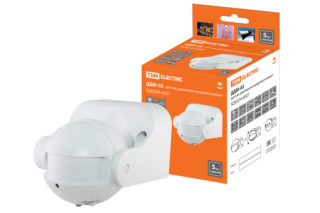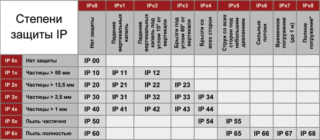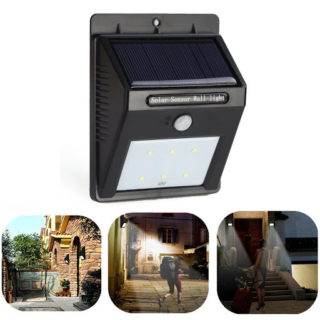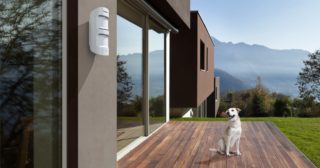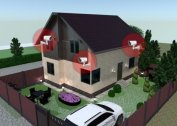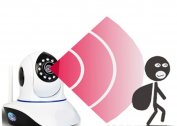One of the components of a security alarm that increases its effectiveness is a volume sensor. It does not measure volume and does not track volume stability; it responds to changes in the location of objects that fall into the detection zone. If this happens, the system triggers and raises an alarm. The device is called the volume sensor because it covers the volume of the room in which it is installed, since the detection area vertically and horizontally is 90 degrees. The detectors have different designs and operating principles. These features must be considered when choosing equipment.
Types of motion sensors
Motion sensors, which is essentially a volume detector, differ in how they detect the movement of objects.
Microwave
The design of the microwave sensor provides a generator and a receiver of high-frequency electromagnetic waves. The generator constantly emits waves in the microwave range. The detection principle is based on the Doppler effect. Waves bounce off surfaces, the return signal is received and analyzed. When recording changes in the characteristics of electromagnetic waves, an alarm is triggered. Such devices most effectively detect movement along the axis of radiation.
The advantage of a microwave sensor is that it detects movement, even if the signal path is blocked by obstacles. Dense and thick obstructions significantly weaken the signal, but if the structure is light and quite thin, movement will be detected.
Since microwaves are harmful to human health, microwave sensors are not recommended for installation in places of permanent residence. It is preferable to use them for security systems installed in warehouses, garages and other similar premises.
Infrared
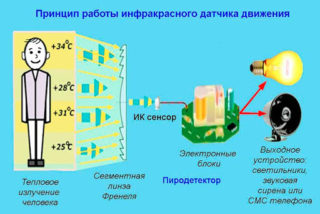 The simplest and most widely used volume sensors are infrared. They react to the IR glow of certain objects. The higher their temperature, the brighter the radiation. If a moving object emitting a sufficiently strong infrared light enters the detection zone, the sensor is triggered.
The simplest and most widely used volume sensors are infrared. They react to the IR glow of certain objects. The higher their temperature, the brighter the radiation. If a moving object emitting a sufficiently strong infrared light enters the detection zone, the sensor is triggered.
The main elements of an infrared detector are: pyrodetector, segmental lens and photocell. The lens focuses infrared light on the photocell, and the pyrodetector detects the signal. The disadvantage of an IR sensor is that false alarms can occur due to household appliances emitting intense infrared light entering the coverage area. The detection range of the object is in most cases from 6 to 10 m along the optical axis. But at the edges of the detection zone, the range decreases.
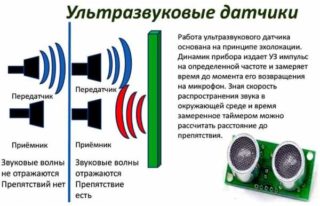 Such detectors are designed for installation in residential premises, as they are safe and do not produce harmful radiation.
Such detectors are designed for installation in residential premises, as they are safe and do not produce harmful radiation.
Ultrasonic
The ultrasonic sensor emits waves in the range from 20 to 60 kHz. Its action is also based on the Doppler effect. The reflected waves are received and are compared with the transmitted ones using the built-in processor. If changes are recorded, the circuit closes.
Volume Sensor Selection Criteria
It is necessary to choose a device, knowing the conditions of its operation, the installation location, the type of system in which it will be used.
- One of the important selection criteria is weather resistance. This parameter is indicated by special marking.If moisture is likely to get on the device case, you must select a device with a protection level of at least IP65. If direct contact of the case with water or a significant increase in the level of humidity of the ambient air is excluded, but high dust content is possible, choose a device with a protection level of IP44 - the case protects the electronic elements from dust and solid particles.
- It is necessary to prevent false triggering of sensors. Therefore, it is preferable if active detectors will be protected from electromagnetic radiation, and passive will be protected from animals - the detector will not respond to their movement.
- If the sensor will be installed in a residential building, it is better to choose an infrared detector, excluding ultrasonic and microwave models.
- Devices can be intended for open or flush mounting. The first should have an aesthetic appearance, the second - a compact body.
- Operating temperature matters if the detector is installed in an unheated room or outdoors. Some models can work in the range of -30 ° C - + 50 ° C.
- Current consumption in guard mode. The cost of paying for electricity directly depends on this parameter.
- The number of alarm zones. Detectors with several alarm zones exist. One such device replaces several.
There are devices that use several motion detection options. In them, the disadvantages of one method are compensated for by another.
Scope of use
The most widely used volume sensors are used in burglar alarms. Volumetric alarm systems monitor the volume of the room and give a signal when foreign objects are detected, generate an alarm message to be sent to the security control panel or to the owner over the air. They have enough functions and adjustment options. Some first give a warning signal and only then activate the alarm.
In addition to security alarms, they also find application:
- as elements of a fire alarm;
- in video surveillance systems;
- to turn on the lighting;
- to control air humidity;
- in technological lines and control systems;
- in logistics when storing products.
As a result of the operation of the volume sensor, which is part of the video surveillance system, video recording is activated - shooting is performed only when necessary, and not all the time, equipment life is saved, disk space and battery energy are saved.
If the volume sensor is used in lighting, the light turns on only when necessary, automatically, you can refuse the switches completely. However, volume sensors were designed specifically for burglar alarms.
Special volume sensors for car alarms are available. Special dual-zone devices respond to penetration into the cabin, the proximity of a person to the car. Moreover, the detectors recognize movement even through armored and tinted windows.
Installation of volumetric sensors in the room
Volume sensors are installed only on hard surfaces where vibration is excluded. It is preferable to fix them at a height of at least 2 meters from the floor on the bracket that comes with the kit (you can also directly on the wall). The detection zone should not include windows, as well as household equipment that generates heat and affects the movement of air flows, for example:
- heaters;
- fans
- air conditioners.
Sensors should be installed so that they do not interfere with each other's work and with the smallest number of them, “dead zones” are minimized.
It is advisable to install infrared detectors above the doorway, because most of them have protection against sabotage - they monitor movement in the detection zone and directly below them. If there are two sensors, it is advisable to arrange them in the corners, directing the optical axis diagonally.
Microwave detectors cannot be installed nearby, because false alarms will often occur. The minimum possible distances between the devices are indicated in the user manual. It is permissible to install only those devices that emit waves of different frequencies.
Wireless systems use address sensors that translate the signal into digital format. To install such a system, you need to set the detector number in the settings, and adjust the parameters through the central control device.
When connecting the detector to the mains, make sure that the voltage is not exceeded.
Additional sensor functions
The main function of the sensor is security, when, subject to conditions, the detector closes the circuit.
Additional functions:
- Protection from animals. Pets can cause false positives, especially if they are large enough. Protected devices do not respond to animals.
- Penetration Report. The sensor generates a notification of an alarm event, by transmitting the state by radio to the GSM alarm system.
- Tamper Detector.
- Sensitivity adjustment.
- Disguise detection.
- Self-diagnosis.
- Anti-jamming.
Options increase equipment stability and usability.
Benefits of using burglar alarm sensors
The advantages of burglar alarm sensors include:
- Resistance to adverse working conditions - the device case has a high level of protection against dust, solid particles, moisture.
- High sensitivity - provided that the alarm is set correctly, the alarm sensor responds quickly to movement and gives an alarm.
- The complexity of the search and dismantling - hidden sensors are difficult for an attacker to find, and dismantling it before it works is even more difficult.
- Some models of volume sensors can operate on battery power, so it is not necessary to draw a power line to install it.
- Ability to adjust sensitivity - changing settings eliminates false alarms and adjusts the sensitivity range depending on operating conditions.
Separate disadvantages of the sensors are also present. This is primarily a high cost and the need for careful adjustment.
The volumetric sensor used for burglar alarms helps prevent theft, catch an attacker immediately or find it after hacking. The device works instantly and significantly increases the effectiveness of security systems.
